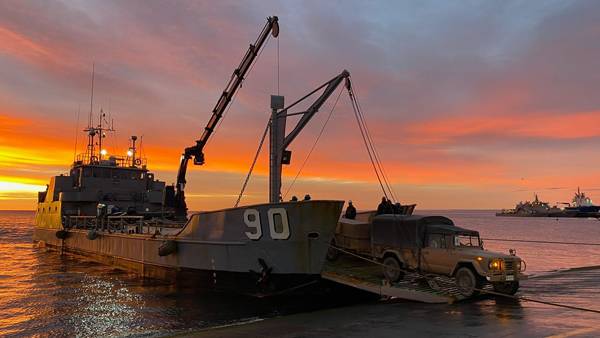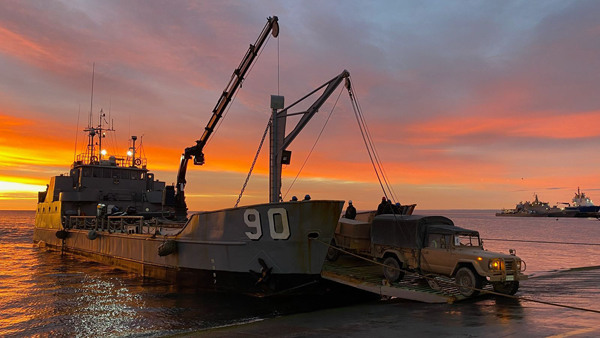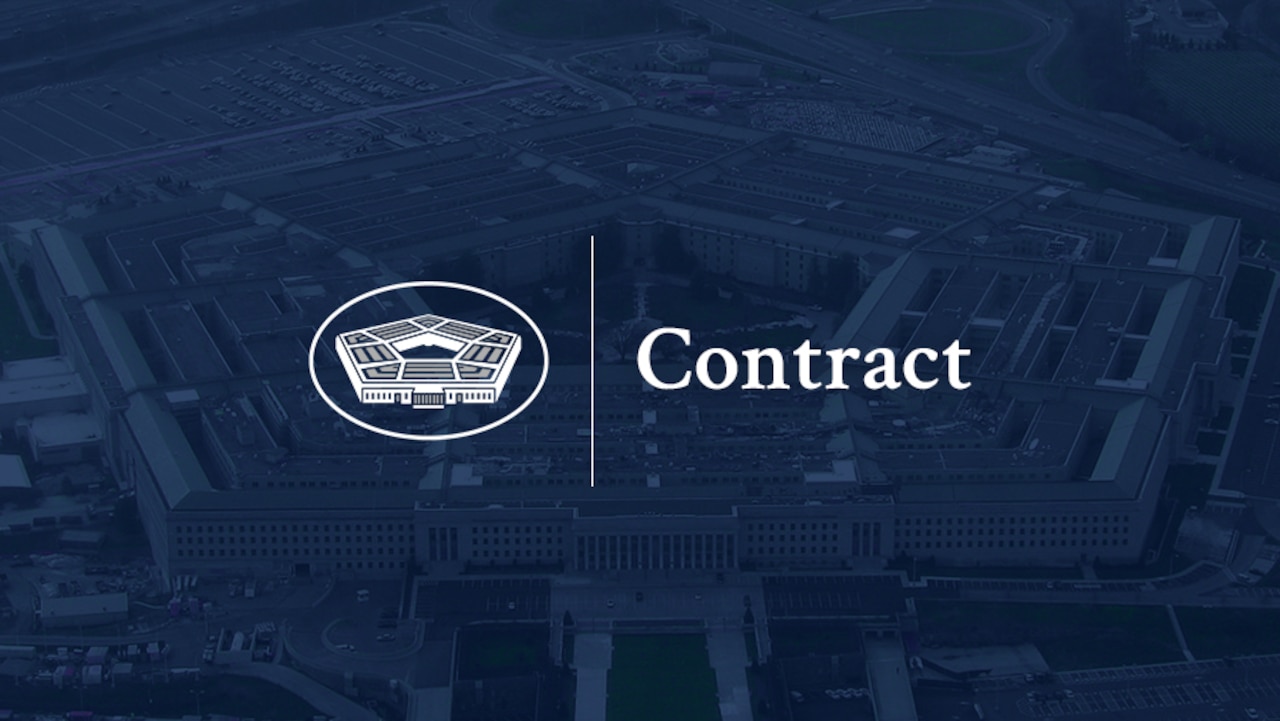Que tanto avance tecnológico representa el SM-2 MR Block IIIA respecto del SM-1 MR Block VIB?
En Australia dicen que la transición permitió explotar el control del mar.
Este artículo (reseñado más abajo) revela la capacidad de ir más allá del modo HAW de iluminación directa ... mediante el modo Mid-Course-Guide ensayado en las Adelaide, lo que posibilita el aprovechar todo el potencial del misil ahorrando energía al generar una trayectoria más eficiente (actualizada del blanco en movimiento) y hacerlo con mucho menor nivel de pre-aviso al no necesitar iluminación continua del blanco atacado sino sólo al final del recorrido del misil.
Entre las particularidades de la configuración actual FFG (FFG-7 NTU) está en que el traking radar del Mk-92 CAS -Combined Antenna System- (el radar cassegrain invertido de la parte de arriba del huevo, figura de abajo) utiliza seguimiento monopulso e inyección de onda continua (CWI) para la iluminación y la adquisición de objetivos tridimensionales, con lo cual se generan puntos probables de interceptación (PIP) que se envían por uplink al misil para corregir su trayectoria en el modo Mid-Course-Guide y terminar la trayectoria con la iluminación directa, mientras que la antena paraboloide truncada inferior (el radar de la parte de abajo del huevo) utiliza una alta velocidad de exploración (60 rpm) para la búsqueda de blancos.
MK-92 CAS de las Adelaide
En cambio con AEGIS, el blanco atacado dotado de RWR sabe que hay radiación
pero no sabe que lo están trackeando especificamente y que hay un misil lanzado en su contra actualizado en todo momento (esa es una de las gracias de AEGIS además del multicanal con alta capacidad contra ataques de saturación)
Mencionan los test en Australia llegando a los límites operacionales del misil contra blancos que se mueven deliberadamente después del lanzamiento del proyectil para asegurarse de la capacidad del sistema del combate del buque para corregir la trayectoria del misil mediante el cálculo del PIP más adecuado en todo momento.
El resultado: se expande el área a ser amenazada con las capacidades anti-aéreas desde 25 millas náuticas a 90 millas náuticas, dificultando la detección e identificación de blancos de superficie de los medios aéreos del adversario, a la vez que se reduce el desempeño de las armas adversarias al tener que emplearse desde mayores distancias o desde menor altitud aumentando el consumo del combustible del vector atacante, afectando su radio de combate. Como fin del artículo agrega la sinergia con los AWACS en la identificación conjunta de amenazas y en ofrecerle un anillo de protección anti-aéreo en caso de operar a distancias cercanas.
En mi opinión, tener capacidad de tracking de cuatro blancos a la vez y dos canales de fuego por fragata que puedan alternarse para unos pocos misiles semi-activos de largo alcance en vuelo es algo bastante bueno considerando la cantidad de blancos aéreos existentes en la región (no muchos). Ahora, yo trataría de que esos canales de fuego semiactivos no tuvieran también que requerirse en defensa de punto, donde hay soluciones de seeker autónomo como CAMM o ESSM Block 2 que podrían reducir esa carga de trabajo adicional para los sistemas de control de fuego, permitiendo simultaneamente abordar una mayor cantidad de blancos a largas y cortas distancias, en orden a hacer más robustos aún a nuestros buques respecto de ataques de saturación.
En ese sentido, tanto para las Adelaide como para las M que tienen pendiente la renovación de su misil de punto (en la primera ESSM Block I que no reportan llegada y en la segunda RIM-7P VL), surge naturalmente, dados los equipos que ya tienen, la alternativa de mejora que representa el ESSM Block 2.
A continuación el artículo oficial de la Real Armada Australiana:
Semaphore: SM2 and Sea Control
Semaphore Issue 7, 2012
Download
In June 2011 HMAS Sydney conducted a series of missile firings on the US Navy’s Pacific Missile Range Facility off the coast of Hawaii. A key aim was to prove that the upgraded Adelaide Class Frigates (FFG) could exploit the full capabilities of the SM2 Standard Missile after a major upgrade program that saw it replace the previous SM1 surface to air missile. A proven, contemporary surface to air missile capability is a core component of the surface force’s ability to gain and exploit sea control. Without sea control, a maritime force will be unable to adequately protect sea lines of communication or conduct maritime power projection operations.
The SM2 missile is the mainstay of the US Navy’s anti-air warfare system and will be the major weapon in the RAN’s new Hobart Class Destroyers (DDG). It is a solid fuelled, tail controlled, supersonic surface to air missile designed to defeat the full range of aircraft and missile air threats. It is a very capable weapon, having a range of 90nm and speed of >Mach 3. However, it is only one variant in the Standard Missile family. Its predecessor, the SM1, was first test fired by the United States in 1966 and was introduced into the RAN Perth Class DDG in the late-1970s. SM1 was the original weapon on the Adelaide Class FFG and upgraded versions of the missile are still in service with a number of navies around the world. The SM3 variant is gaining prominence as the weapon used in the US ballistic missile defence system and SM6 is the next generation surface to air missile destined to replace the SM2.
The FFG are the first RAN ships to be modified to fire SM2. The missiles are fired from the same launcher as were SM1 missiles, although modifications were required to the launcher to cater for the new missile interface and capability. The FFG class is in service with seven nations around the world, but the RAN is the first navy to attempt to integrate the SM2 into the class and the magnitude of this effort should not be underestimated.
HMAS Melbourne conducted the RAN’s first SM2 firing in late 2009 against a surface target to prove the modifications made to the combat system and launcher. HMAS Newcastle conducted the second firing, and first against an air target, during Exercise RIMPAC off Hawaii in 2010. These first two firings were designed to prove the ships were capable of replicating the capability of the SM1 missile that was replaced,
but at that stage the supporting software and associated systems to allow the full capability of SM2 to be used were still under development.
The firings conducted by Sydney were an integral part of that development and tested a number of the high level features available in the missile. To understand the large increase in capability the SM2 will give the RAN it is necessary to understand the differences between the SM1 and SM2 missiles.
The SM1 has a nominal range of 25nm, flies at Mach 2 and is a ‘home all the way’ semi-active missile.
[1] In order to engage a target the ship must first illuminate it with a continuous radar wave (known as continuous wave illumination, or CWI). The missile is then fired and detects the reflected radar energy that is returning from the target. The SM1 missile homes on this reflected signal until it intercepts the target.
 HMAS Sydney launching a SM2 missile on the Pacific Missile Range Facility off Hawaii.
HMAS Sydney launching a SM2 missile on the Pacific Missile Range Facility off Hawaii.
The continuous wave illumination required to guide the SM1 is transmitted from a dedicated fire control radar on the ship that must continue to point at the target throughout the missile’s flight. The RAN’s FFG have two fire control radars for this purpose, so the ships were capable of engaging two air targets simultaneously. Should the SM1 missile lose reception of the CWI signal, the missile self destructs as there is no other method of homing onto the target.
The SM2 missile has a number of significant improvements over the SM1 including a greater range (90nm) and speed (>Mach 3). While it can be fired in the same ‘home all the way’ mode as SM1 it can also be fired without needing the CWI radar return to guide it until the terminal phase. In the FFG this is known as mid course guidance mode, where the missile initially flies autonomously towards a predicted intercept point (PIP) calculated by the ship’s combat system immediately prior to launch. The ship continues to update the PIP based on changes to the target’s movement after the SM2 is fired with an updated PIP being transmitted as necessary to the missile which then adjusts its flight accordingly. Once the missile gets close enough the ship’s fire control radar commences transmitting the CWI signal for the missile to home on the target during the terminal phase of flight. Consequently the SM2 does not waste energy by unnecessarily manoeuvring early in its flight which increases both its overall range and its ability to manoeuvre heavily in the terminal phase of the engagement.
 Able Seaman CSO Maxine Wilmott in the Operations Room of HMAS Perth monitoring the SM2 launch.
The mid course guidance mode has other advantages. CWI transmissions are easily detected by a target so once illumination commences, the target gains valuable warning time of an imminent threat. As the SM2 missile does not need to have the target continually illuminated with CWI for its entire flight, there are reduced warning queues for the target
Able Seaman CSO Maxine Wilmott in the Operations Room of HMAS Perth monitoring the SM2 launch.
The mid course guidance mode has other advantages. CWI transmissions are easily detected by a target so once illumination commences, the target gains valuable warning time of an imminent threat. As the SM2 missile does not need to have the target continually illuminated with CWI for its entire flight, there are reduced warning queues for the target.
In the current FFG configuration, there does need to be fire control radar support to track the target and provide the target’s 3-Dimensional position for the PIP calculations. Not so with the new Hobart Class DDG as its AEGIS combat system will be able to track all targets in 3-Dimensions at all times. Using the SPY1D(V) radar (the primary radar fitted to the ships) as a tracking source, data is continuously sent to the SM2 in flight by the SPY radar as guidance commands, again without the target detecting that it has been engaged. AEGIS can manage multiple weapons at multiple targets at any one time, with the CWI illuminators time sharing illumination of the targets during the terminal phase of the engagement.
The trials Sydney conducted in Hawaii covered a number of key aspects of the SM2 missile system. The specific details being explored and the results are classified, but were very promising.
One firing was conducted in the ‘home all the way’ mode to prove that capability, while other firings explored various performance limits, system redundancies and operating modes, including firing at the edge of the designed operating limits.
A number of firings were conducted where the target was deliberately manoeuvred after the missile was fired to ensure the ship's combat system could accurately monitor the PIP and send updates to the missile. There are also a number of key redundancies built into the SM2 system and simulated faults were injected in some firings to test these redundant modes.
The results of these firings are now being used to refine the various software systems in the FFG with the final product to be delivered to all four ships shortly. Once this happens, the RAN will have a tested and proven anti-air warfare capability out to 90nm from the firing ship, which will fundamentally change the way the ADF conducts air warfare.
The range at which hostile aircraft will feel threatened by ships has effectively increased from 25 to 90nm, significantly complicating their ability to detect and identify surface contacts while simultaneously reducing their own weapon performance. This is a tremendous advance in the RAN’s current anti-air warfare capabilities; an advantage that will be further boosted once the Hobart class DDG enter service later this decade.
 HMAS Sydney firing a SM2 missile on the Missile Range facility off Hawaii.
The RAN’s SM2 capability will also greatly increase the operating area that friendly aircraft can operate in which provides a tremendous increase in the ADF’s air warfare capability. For example, Airborne Early Warning and Control (AEW&C) aircraft can operate at some distance from the ships, while remaining under the protective umbrella provided by SM2. Indeed, the AEW&C aircraft will provide much of the cueing and targeting information for the ships’ weapons to use; an excellent example of the whole being greater than the sum of the parts.
HMAS Sydney firing a SM2 missile on the Missile Range facility off Hawaii.
The RAN’s SM2 capability will also greatly increase the operating area that friendly aircraft can operate in which provides a tremendous increase in the ADF’s air warfare capability. For example, Airborne Early Warning and Control (AEW&C) aircraft can operate at some distance from the ships, while remaining under the protective umbrella provided by SM2. Indeed, the AEW&C aircraft will provide much of the cueing and targeting information for the ships’ weapons to use; an excellent example of the whole being greater than the sum of the parts.
The combination of ships and aircraft working together to detect and identify air threats and then ships and combat aircraft being able to engage those threats will be a powerful force multiplier for the ADF. Knowing where a threat is situated is one thing - SM2 brings the capability to deal with those threats if necessary.
The trials conducted by Sydney in June 2011 validated the very good work undertaken by the RAN, the Defence Materiel Organisation and a number of Defence contractors to bring the full capabilities of the SM2 missile to the RAN.
- ↑ A ‘semi active’ missile detects the return signal transmitted by the firing platform. An ‘active’ missile transmits its own radar signal and detects the returns.
Sea Power Centre - Australia
Sea Power Centre - Australia
Department of Defence
Canberra ACT 2600
seapower.centre@defence.gov.au
Royal Australian Navy

www.navy.gov.au
Saludos antiaéreos de zona













